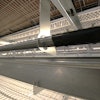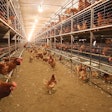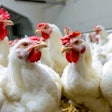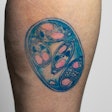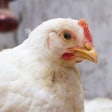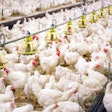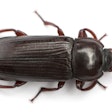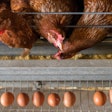
Poultry economist Dr. Paul Aho recently reflected that we are now living in the portal to the post-COVID-19 world and, once we pass through it, the global poultry industry could be very different. Unlike other markets negatively impacted by the COVID-19 pandemic, our industry is still enjoying steady demand. However, the economic rebound will be slow, and there will be challenges ahead.
King of meats
One reason for our industry’s resilience is that poultry is universally palatable, and acceptable to most cultures and religions. As Dr. Aho put it, chicken has emerged as the “king of meats." It is also, cheaper than other meat proteins - particularly important in times of economic uncertainty.
Moreover, protein-rich poultry is a nutritious choice to keep immune systems strong at a time of widespread illness and, according to the Organization for Economic Cooperation and Development (OECD), chicken is sustainable, with a smaller carbon footprint than other meat-producing species.
Profound transformation
COVID-19 has forced travel bans, border closures, limited transport and shut off parts of the foodservice industry. These are considerable obstacles to overcome. COVID-19 disruptions have forced a reconfiguration of the poultry supply chain, causing a radical and impressive adaptation of the foodservice industry. For example, due to COVID restrictions, fewer people are eating in restaurants, making home cooking, take-out and delivery services popular distribution channels. When we emerge on the other side of COVID-19, the world economy will still be recovering. These trends are likely to continue well into the future.
Amid these disruptions, one reality remains unchanged – a growing global population, which means that demand for poultry will continue to rise into the foreseeable future.
Smart farming – a sustainable future
Our challenge will be to meet this growing need in a way that is environmentally and socially responsible and economically favorable for the world’s producers, preventing the health crisis from becoming a food crisis. Poultry breeders and growers will also need to prioritize contingency planning for future pandemics or bird diseases. We cannot rise to this challenge singlehandedly. Instead, we will need to rely on innovative ideas and technological advances to supply healthy and sustainable protein.
Rabobank’s Justin Sherrard recently alluded to a “dimension of change in accelerating digitalization along supply chains.” The industry is seeing this digitalization emerge in the form of innovative farming tools, such as big data and sensors that let us collect farm data in real time, and then analyze it to achieve optimal environments for birds. Additionally, innovations such as robotics to prevent floor eggs or to monitor bird health, along with advances in feed and processing efficiencies, will yield advantages for growers and enhance food security and bird health, welfare and biosecurity. Additionally, compartmentalization and regionalization will help keep supply chains open in the event of future pandemics and avian diseases. Another impact of COVID 19, according to Rabobank, has been a trend for locally-sourced food. To satisfy this, poultry breeders need to maintain multiple production bases to keep breeding stock supply close to growers.
Our post-pandemic world will be fraught with challenges, but I view them as opportunities for continuous improvement and increased efficiencies. While we have to work hard to overcome the obstacles produced by a COVID-weary market, as an industry, we are equipped with considerable tools to re-form the “new normal” to our advantage, so that we can continue to put healthy, affordable and sustainable food on every table around the world.

